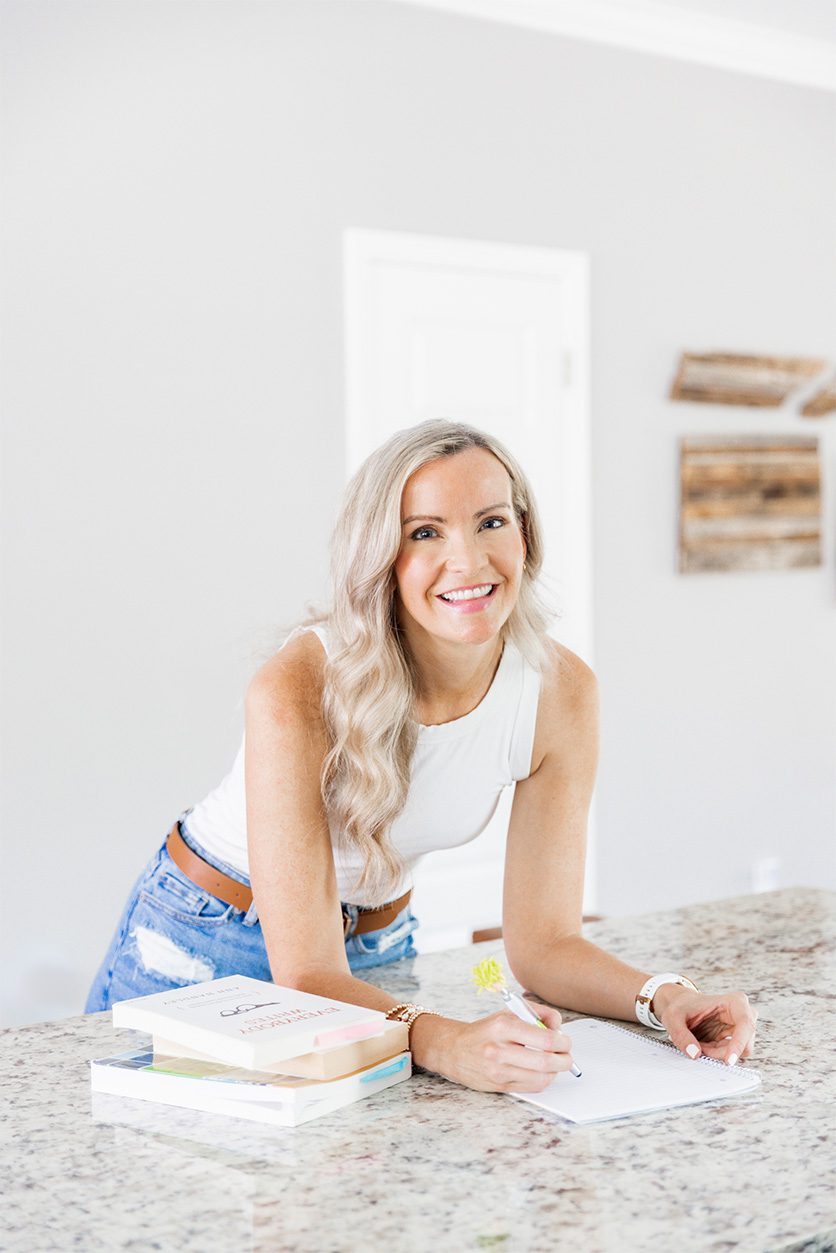- 🖋️ Meet the Expert Behind High-Converting Copy
- Where to Start with Copy When You’re Ready to Invest
- Landing Pages vs. Full Websites: What Makes Copy Convert
- How Email Copy Supports Launches & Long-Term Connection
- Why Blogs Are Far from Dead
- Writing for SEO and Humans: The Balance Behind Website Copy That Converts
- How to Choose the Right Copywriter for You
- What Many Business Owners Miss About Copy ROI
- DIY Copy Tweaks You Can Make Now
- When the Words “Click”
- Conclusion: Why Website Copy Still Matters (More Than Ever)
When it comes to creating a website that truly converts, design and copy need to be in sync. A beautiful site may catch someone’s eye—but it’s the words that build trust, communicate your value, and compel people to act.
That’s exactly why I sat down with Alyssa Bone of Alyssa B Copy (alyssabcopy.com). Alyssa helps small, women-owned businesses find clarity in their messaging and attract their ideal clients with copy that feels aligned. In this interview, she walks us through how to get website copy that converts, how to think about landing pages, emails, blogs, SEO—and how to make sure your voice stays real.
Whether you are DIYing your own website or preparing to collaborate with a designer + copywriter team, this convo will help you see how the right words can take your design work from pretty to profitable.
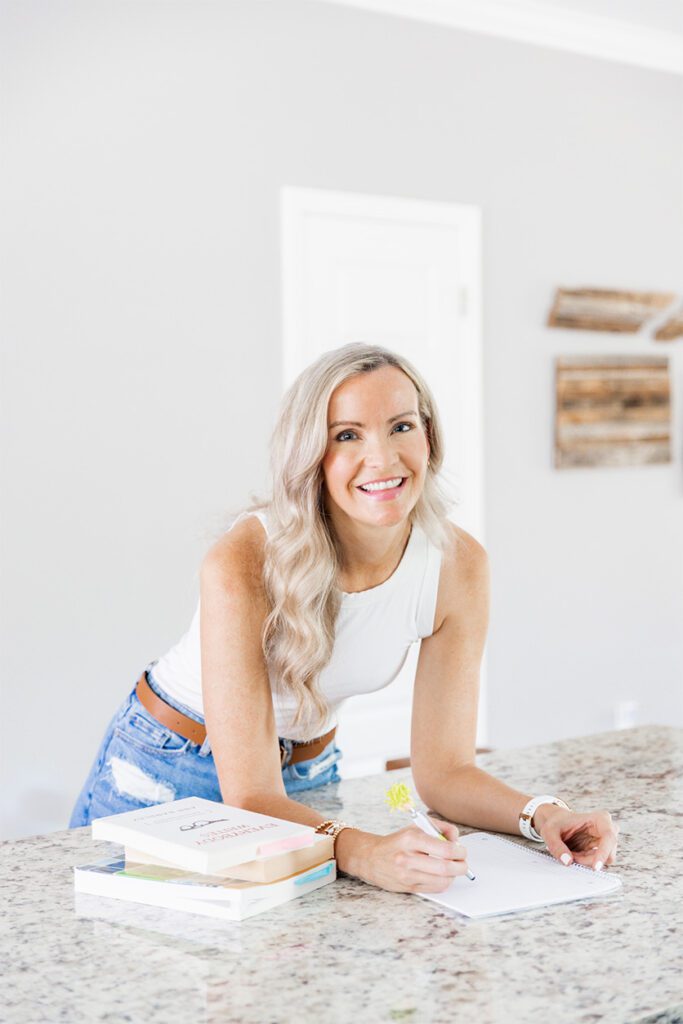
🖋️ Meet the Expert Behind High-Converting Copy
Hi Alyssa! For the interview, I’d love to start with a quick introduction—can you tell us a bit about yourself, who you love to work with, and the kind of copy you specialize in?
Sure! Way back in the day, I graduated with a degree in graphic design and somehow landed my first job in technical writing. Ever since then, I’ve loved helping audiences understand complex topics through words that are easy to follow, connect with, and inspire action.
After three years in technical writing, I moved into a marketing role where I did a little bit of everything—from website and email copy to editorial calendar strategy and graphic design. In 2020, like many people, I decided to prioritize my mental well-being and take the leap into full-time copywriting. It was scary, but it’s been one of the best decisions I’ve ever made.
These days, I love working with small, women-owned businesses that are making a real difference through their work. While I don’t specialize in one specific type of copy (or industry), my favorite projects usually involve blogs, websites, and email sequences.
Where to Start with Copy When You’re Ready to Invest
You offer so many powerful services beyond just website copy—landing pages, email sequences, blog content. In your opinion, where should small business owners start when they’re ready to invest in copywriting?
Yes, the reason I offer so many services is because I have a marketing background and I understand how every platform plays a unique role in building a successful business.
Your website is your digital home base. It’s where you establish credibility and show your audience you understand their exact needs. Email sequences nurture leads and clients, helping them feel connected to you while naturally guiding them to take action. Blog content demonstrates your expertise, educates your audience, and boosts your visibility in search engines.
If I had to choose one place to start, it would always be the website. It’s often your first impression and should clearly communicate who you are, what you do, and why you’re the best choice.
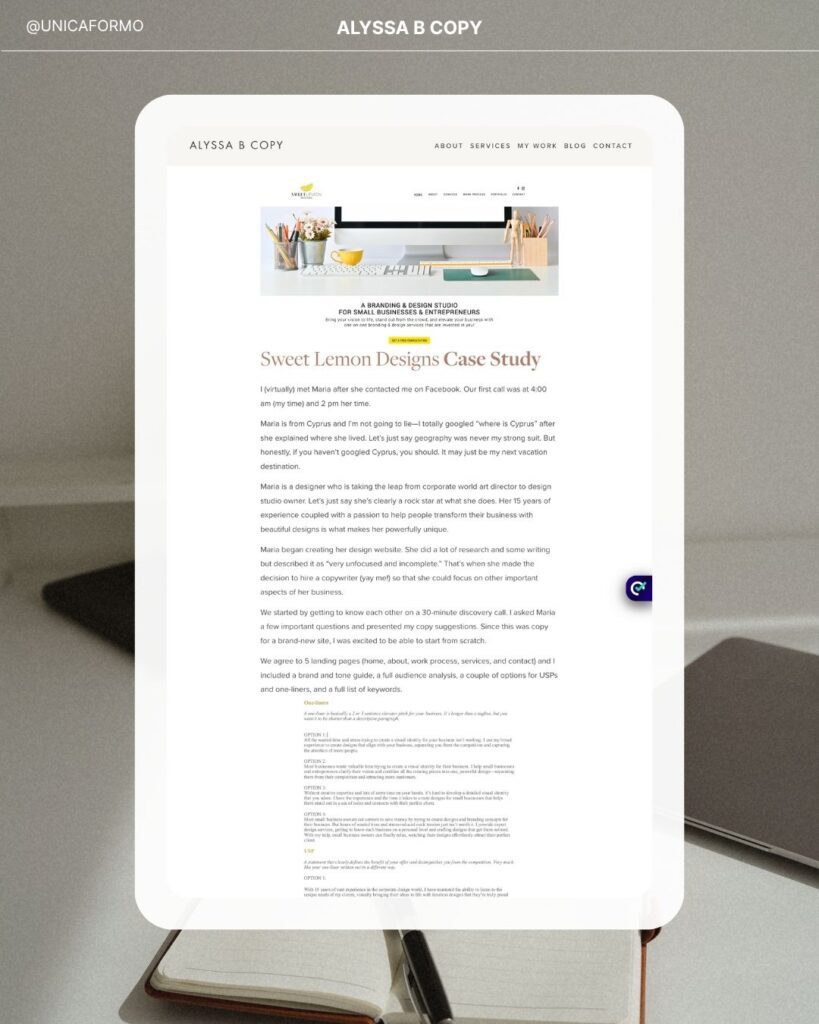
Landing Pages vs. Full Websites: What Makes Copy Convert
Landing pages are such an underrated secret weapon. What makes landing page copy different from a full website—and what should a business owner absolutely include on one?
I couldn’t agree more—landing pages are incredibly powerful! While your website gives an overview of who you are and what you do, a landing page is laser-focused on one specific goal.
Think of it as a distraction-free zone designed to drive one action—whether that’s signing up for a lead magnet, purchasing a product, or registering for an event. A strong landing page includes a clear headline, a concise explanation of value, social proof (like testimonials), and one call-to-action. That simplicity is what makes them convert so well.
How Email Copy Supports Launches & Long-Term Connection
You write high-converting email sequences. What are some ways email copy can support a launch or even a long-term nurture strategy? (And any hot tips on how not to sound like a robot or too salesy?)
In my opinion, email is still one of the most effective and affordable ways to connect with your audience—and yes, people do still read them!
An email nurture series is a great way to build relationships with new subscribers. When someone joins your list through a lead magnet, take them through a short sequence that introduces who you are, shares your story, builds credibility through testimonials or client results, and ends with a clear invitation to take the next step.
And email newsletters are a great way to stay top of mind and to continually share value-packed content that solves a problem.
And as for not sounding robotic—write like you’d talk to a friend. Read your email out loud before hitting send. If it doesn’t sound like something you’d actually say, rewrite it.
Why Blogs Are Far from Dead
Let’s talk about content writing—especially blogs. There’s a lot of talk about whether blogs are “dead,” but I know you see it differently. Why is blog content still valuable, and how do you help clients use it strategically?
I’ve heard that too, and I completely disagree—blogs are far from dead! In fact, they’re still one of the most powerful ways to strengthen your online presence.
First, blogs help your content show up in search results. Second, they position you as an expert by sharing educational and actionable insights your audience actually wants.
At the end of the day, people need to find you somehow. When you know what your audience is searching for—and you write content that answers those questions—you’re not just providing information, you’re building trust and authority.

Writing for SEO and Humans: The Balance Behind Website Copy That Converts
When it comes to SEO, what role does it play in your content strategy? How do you balance keywords and structure while still sounding like a real human?
It can definitely be tricky to balance SEO and natural, human-sounding copy. For me, clarity and connection always come first. If your content feels stiff or robotic, your readers will lose interest—fast.
Once I’ve written something that flows naturally, I’ll go back and fine-tune headers, title tags, and meta descriptions to incorporate keywords in a way that feels seamless.
And now, writers also need to think about GEO—writing in a way that’s optimized for generative AI as well as traditional search engines. It’s not a totally new approach, but it does mean being intentional about clarity, structure, and content depth so your work gets found.
How to Choose the Right Copywriter for You
For someone looking to hire a copywriter, what should they look for to make sure it’s the right fit—not just in terms of skill, but also personality, process, and tone?
Such a great question. Every copywriter brings their own personality, style, and rhythm to the work. Some excel at bold, playful copy while others shine in warm, conversational tones.
It’s true that a good copywriter can adapt to a client’s brand voice—but connection still matters. When you’re looking for a copywriter, take time to define what kind of person and communication style you’d like to work with. Then ask potential writers about their process and how they collaborate. You’ll quickly get a sense of whether they’re the right fit for your brand.
What Many Business Owners Miss About Copy ROI
What do you wish more small business owners understood about investing in copy? (Especially when it comes to ROI—not just conversion rates but also confidence, time saved, etc.)
This one’s big. I wish more people realized just how transformative great copy can be for their business.
Business owners are always thinking about how to bring in more leads—but if your website, emails, and social media aren’t using the right words to attract the right audience, you’re leaving money on the table.
When your copy truly connects, your audience feels seen and understood. That’s what drives them to take action—whether it’s booking a call, signing up, or making a purchase. Great copy doesn’t just convert; it gives business owners confidence and clarity in how they present themselves to the world.
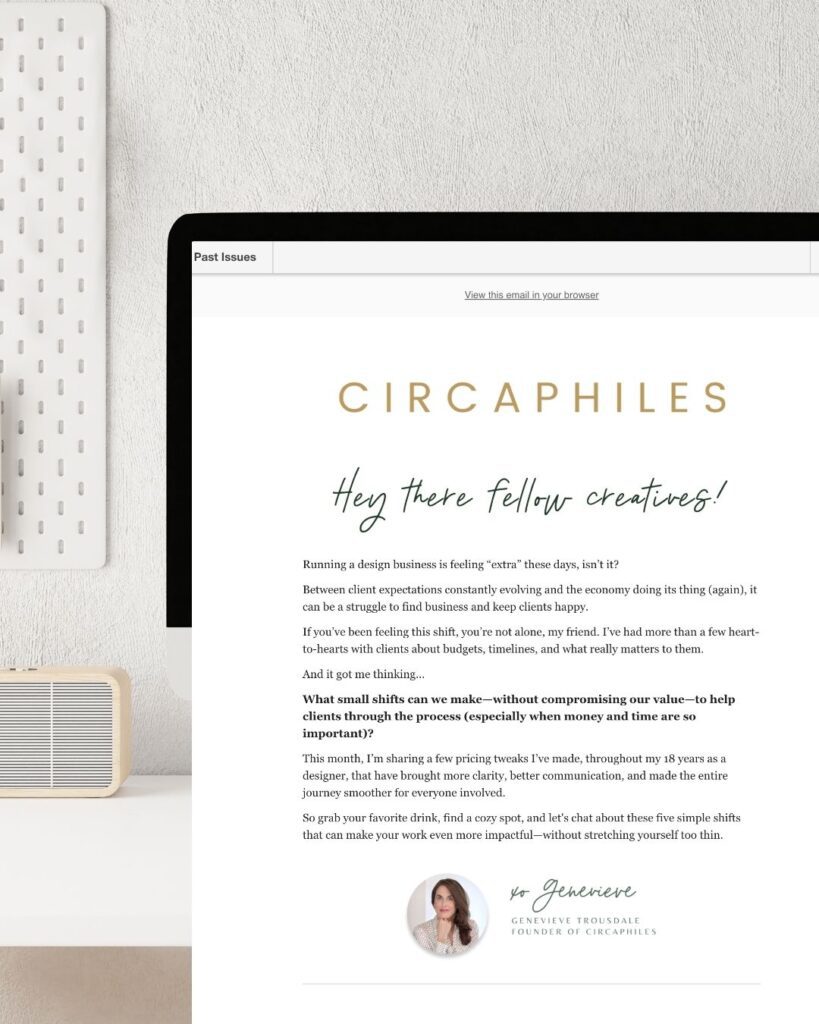
DIY Copy Tweaks You Can Make Now
For business owners who are DIYing for now, are there any simple copy tweaks or tips you recommend that can make a big impact without starting from scratch?
One simple change business owners can make is to the header of their website. This is the first thing visitors see, and it needs to grab their attention immediately. You need to say who you are, what you do, and who you do it for in just a few short sentences.
Here’s a simple fill-in-the-blank template that works every time:
We help [audience] [achieve goal or solve problem] through [your product/service].
[CTA button]
When the Words “Click”
And finally, what do you love most about helping people bring their brand voice to life? What makes it click for you when the words really feel aligned?
I absolutely love getting to know a brand and then crafting copy that feels like them. There’s something so satisfying about capturing a client’s tone and personality so precisely that they say, “That’s exactly how I’d say it.”
People often underestimate the power of words, but when your message aligns perfectly with your brand voice, it changes everything—from how confident you feel to how your audience connects with you. That’s the magic of great copy.

Conclusion: Why Website Copy Still Matters (More Than Ever)
Working with clients as a designer, I’ve seen way too many websites that get overlooked—because the visuals looked great but the messaging didn’t connect. Strong copy gives purpose to those visuals. It guides attention, explains value, and aligns every element so your visitor actually understands why they should stick around.
With website copy that converts, you’re not just writing words—you’re shaping perception and guiding action. If your visuals are doing the heavy lifting, let your copy step up and carry its share, too.
Want to explore how design + messaging can work together for your business? You can schedule a free call with Alyssa at alyssabcopy.com to see if she’s the right fit for your brand. And if you’re ready for a cohesive brand experience—design + copy—feel free to reach out to me. I’d love to chat about how we can make your website work (not just look pretty).
Pin for Later:
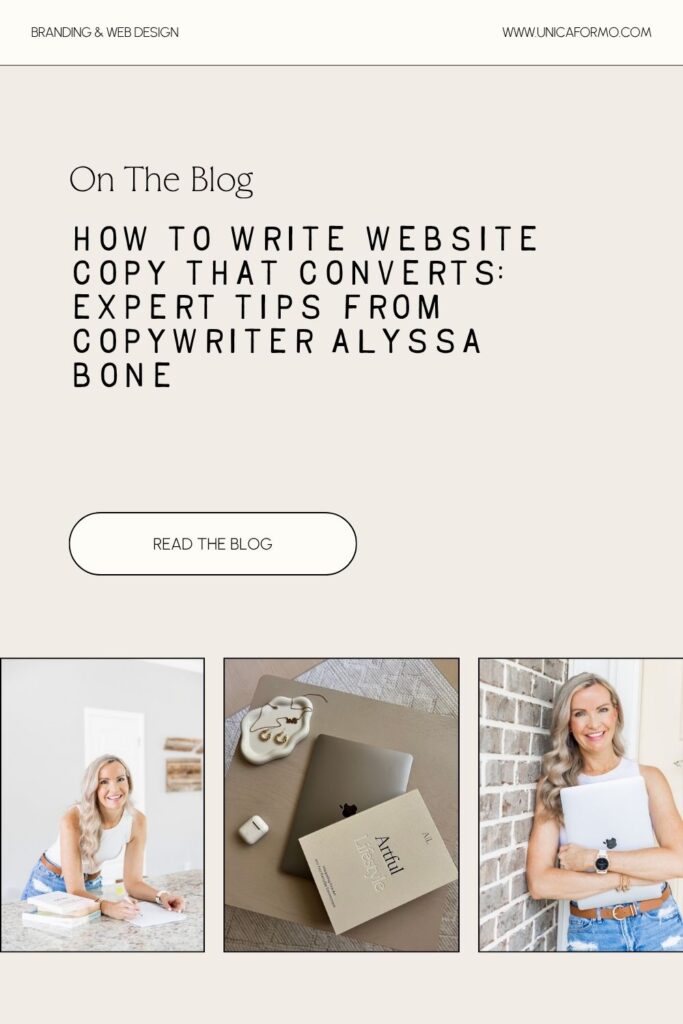
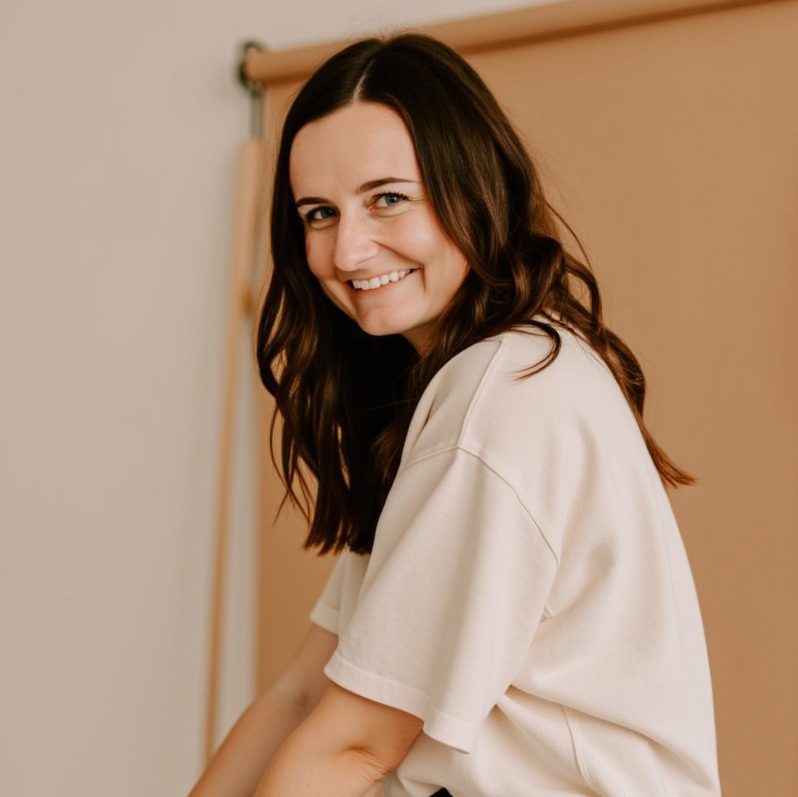
Jordin Brinn is the founder and lead designer of Unica Formo — a creative studio in Columbus, Ohio, specializing in custom Showit website design and brand strategy for service-based businesses like coaches, consultants, therapists, creatives, and wellness professionals. With over a decade of business experience, she helps clients bring strategy, clarity, and personality to their online presence.
Explore design services and free resources at unicaformo.com.
